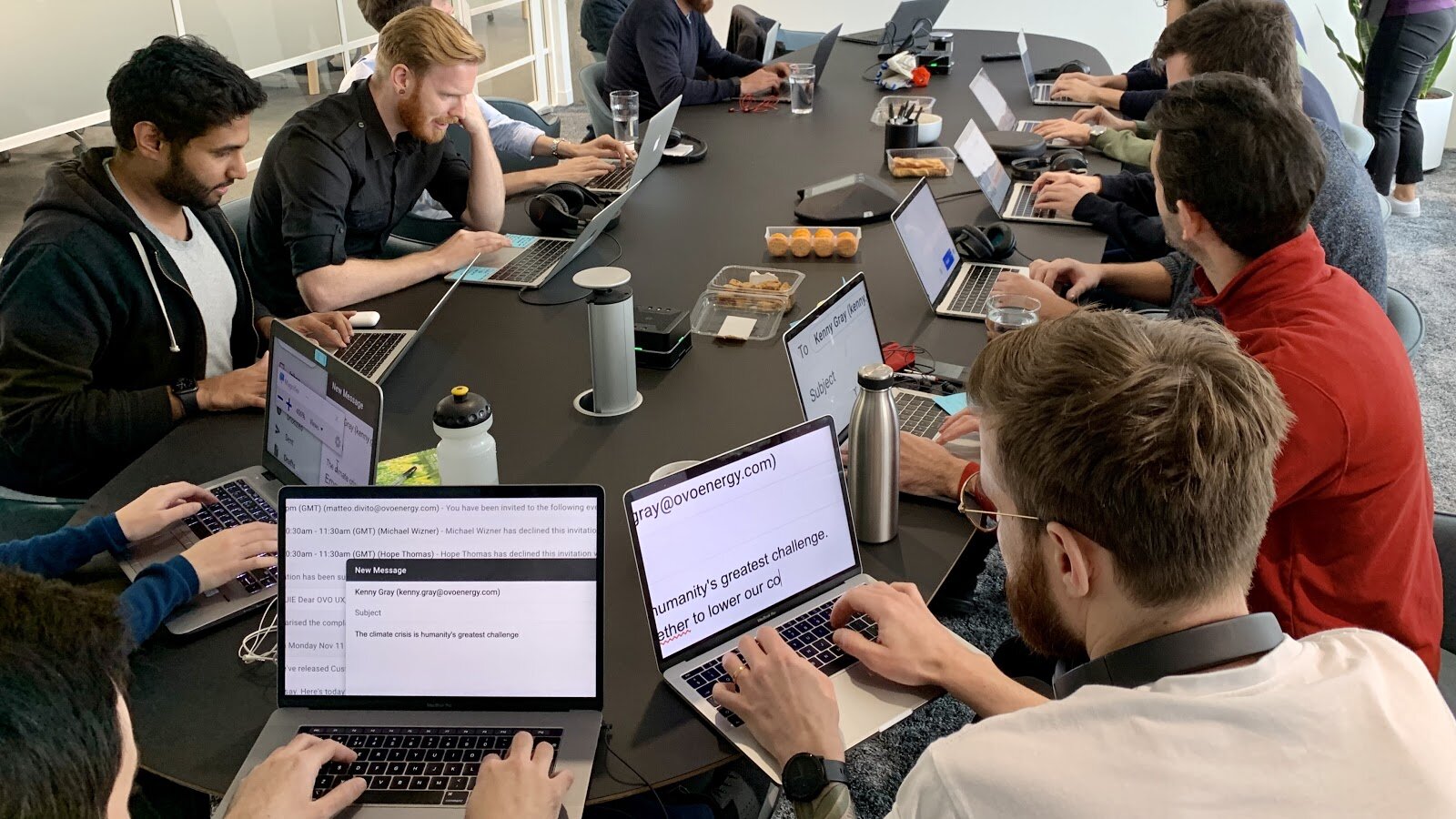Creating an accessibility workshop
First published December 18th 2019, on the OVO Tech blog
—
Background
OVO's vision is to "power human progress with clean and affordable energy for everyone". This means striving to build our digital products so that people of all abilities can use them. This year we celebrated our Accessibility Community of Interest’s 1st birthday. The group was started to raise awareness of the different needs that people have and how our product development decisions can include or exclude people. To achieve OVO's vision we need to mature our understanding and ability to make accessible products.
Identifying our needs
We used the liberating structures technique of 1-2-4-all at our accessibility community gathering to identify the barriers we, as product teams, faced in making our products more accessible.
We analysed the insights and identified themes that would help us become more accessible. We had an assumption that our colleagues would share our understanding of accessibility. Themes we identified demonstrated that we had to better share our current knowledge around tooling, guidelines and assistive technology. We identified specific needs such as how to use aria-live in different situations which we will revisit after addressing our foundational needs.
Developing a workshop
We hypothesised that a small group of us who come from a range of disciplines: front-end development, design and research, would be able to create a workshop that would meet the needs we'd discovered and increase our accessibility maturity.
We defined principles to guide the development of our workshop
more than 1 discipline should facilitate the workshop
more than discipline should benefit from the workshop
it's not a lecture, it should be practical
attendees should be able to put lessons into practice immediately
its a shared learning experience, for attendees and facilitators
These principles allowed us to break the workshop into chapters that we could each take responsibility for creating. We identified that our "Introduction to accessibility" workshop should cover:
What is accessibility
What is the rationale for accessibility
How do disabled people access digital products
What are the standards and guidelines for web accessibility
How can we test the accessibility of our products
The most common accessibility failures
Workshop alpha
Our Digital Support Experience (DSE) team volunteered to be the first to take part in our workshop. This pilot provided an opportunity to learn if the workshop was informative, useful and fun. It also taught us about how to facilitate the workshop.
Thankfully the pilot was a success, we also learned a tremendous amount about how to conduct it.
The content was appropriate for everyone in a product team. In our pilot workshop we had a product managers, a few developers and designers. Having the whole product team present was powerful. It’s not very often that everyone can take a couple of hours out to learn together.
We should first practice how to use assistive technology and accessibility testing tools away from the product we work on every day. This allowed us to focus on learning how to use the tools and interpret the results, rather than assessing our products.
We need to provide set tasks or have goals to complete when using assistive technology. Without this purpose it’s hard to appreciate how the technology works or how difficult it might be to use it.
We should download accessibility testing tools one at a time and learn how to interpret the results together. Giving attention to one tool at a time allows for the group to have a better understanding on how to use them. Using time in the workshop to install tools like Accessibility Insights [link] was a great outcome.
Ask attendees to bring headphones. In our pilot we did not have headphones which created a very loud choir of the BBC headlines.
Workshop live
We have delivered the workshop on 3 more occasions, with 42 attendees, covering 8 product teams. We're continuing to refine the content and delivery of it.
We want the workshop to help increase our accessibility maturity from awareness to knowledge, so that we could make our products more accessible tomorrow than they are today. We're aware that we're not experts on accessibility but we're keen to share what we know to encourage incremental change. The early signs have been positive, so far we have observed the attendees of the workshops:
use the tools and assistive technology to conduct their own technical assessments to identify accessibility fixes to their products
help inform other product teams of accessibility shortcomings in their products
reprioritise an internal initiative to embed accessibility from the beginning


